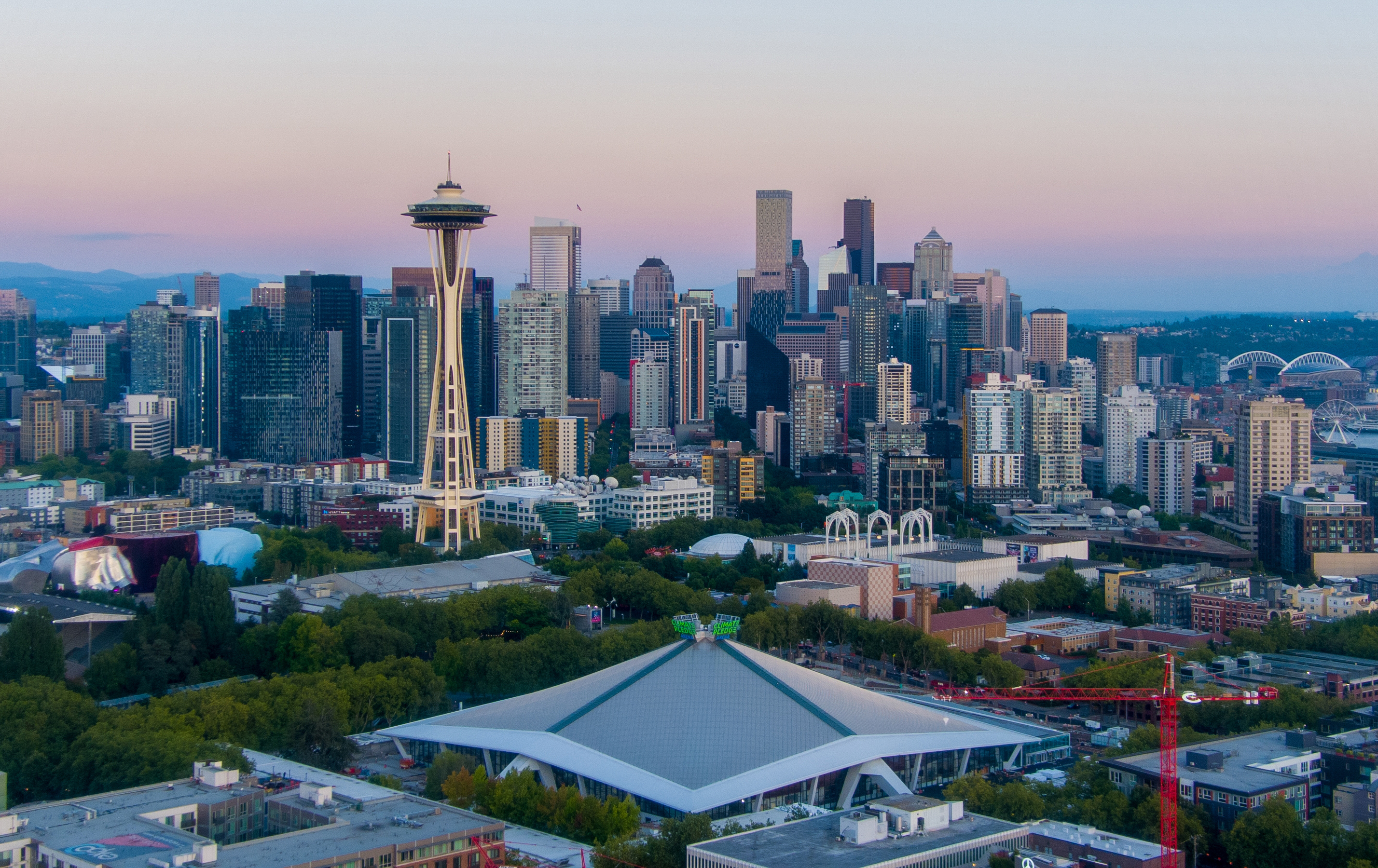Climate Pledge Arena Combines Tech-Forward Sports & Sustainability
It may be home to the Seattle Kraken (NHL’s newest franchise) and the WNBA’s Seattle Storm, but Climate Pledge Arena also represents something much bigger within the world of sports and entertainment: It sets the bar for progressive, responsible and sustainable arena design and operations.
After Amazon secured the naming-rights deal, it gave the venue a name that also serves as a subtle call to action. Climate Pledge Arena is a salute to Amazon’s commitment to The Climate Pledge—a promise made by businesses and organizations to take collective action to achieve net-zero carbon by 2040.
So far, 217 organizations have committed to The Climate Pledge, agreeing to:
- Regularly measure and report on their greenhouse gas emissions
- Implement decarbonization strategies, such as investments in renewable energy and energy-efficiency improvements
- Use carbon offsets to neutralize remaining emissions
The $1 billion sports and entertainment venue has lofty goals, including being the first arena to achieve net-Zero Carbon Certification, generate zero waste and be powered with 100% renewable energy. To turn these dreams into reality, the venue couldn’t rely on outdated or traditional practices. In order for the project to be successful, three important factors needed to come together.
1. Finding Partners that Share a Commitment to Environmental Responsibility
When a venue sends a message around the world promoting sustainability and stewardship, it’s critical that all components bringing the space to life share that same vision.

To meet ambitious sustainability objectives, Climate Pledge Arena followed sustainable construction practices and sourced environmentally responsible materials. It also brought on project team members and partners that were committed to change, including manufacturers that could provide accurate data about the environmental impact of their products. This allowed the venue to make informed decisions about the types of products selected.
2. High-Performance Infrastructure to Support Groundbreaking Technology
Although it may be best known as the world’s most sustainable arena, Climate Pledge Arena is also a tech-forward facility. It needed a robust cabling and connectivity infrastructure to support the technology that provides seamless, safe and unforgettable fan experiences.
State-of-the-art innovation can be found throughout the 740,000-square-foot arena—from grab-and-go concession stands and dual suspended scoreboards to 28,175 square feet of digital signage and massive outdoor plaza and parking displays.
All this technology—wired and wireless—relies on cabling behind the scenes to connect to networks and transmit data. The infrastructure is needed to support current technology, but also be capable of supporting new technology in the years to come. As the arena works toward its goals of achieving net-Zero Carbon Certification, eliminating single-use plastic, conserving water and diverting waste, it didn’t want to worry about cabling upgrades to support hypothetical technology.
3. The Ability to Create Safe Work Environments
Construction began in December 2018, so Climate Pledge Arena was well underway when the pandemic landed in the United States in March 2020.
Despite the setbacks this caused, the arena’s completion date—October 2021—was non-negotiable. Because Seattle was one of the first cities to roll out restrictions, the plans for jobsite access, shifts and crew size had to be re-examined to comply with guidelines.
To keep installation teams moving, products needed to be fast and easy to install without requiring rework or sacrificing performance. Even though most manufacturers were struggling with supply-chain issues and weeks-long lead times, the venue also needed quick access to products (sometimes within a day or less).
Belden’s Impact on Climate Pledge Arena
In 2016, Belden began conducting product lifecycle analyses to measure and reduce the environmental impact of its products.
After products undergo a lifecycle assessment performed using established product category rules (PCRs), they receive an environmental product declaration (EPD). This declaration communicates the results of the lifecycle assessment, which examines the product’s climate change potential, how much energy and water are used to produce the material, etc.
The data in the EPDs measure performance and track progress—and help Climate Pledge Arena make informed decisions about environmentally responsible products.
Read the Full Case Study
Want to learn more about how Belden helped Climate Pledge Arena meet these three objectives—and kept the project on schedule? Read the full case study here.
As the world’s most progressive and environmentally responsible entertainment complex, Seattle’s Climate Pledge Arena is setting an inspiring new standard in sustainable design while encouraging other organizations to do the same—and we’re proud to help spread this message!
![System.String[]](https://assets.belden.com/transform/7d9664bf-965d-4965-a32d-382a9829c061/Author-Belden-Logo-sm-blue-2020-10?io=transform:fill,width:300,height:300)